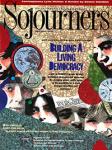You cannot separate environment from empowerment," said Rev. Jesse Jackson during a national tour of minority communities with environmental problems this past spring. Organized by the National Rainbow Coalition, the Earth Day 1990 Organizing Committee, and local grassroots organizations, the tour represented a significant development during the months leading up to the commemoration of the 20th anniversary of Earth Day on April 22.
As the 1990s begin, it is becoming clearer and clearer that concerns around the environment will be a national and international agenda item for the decade. And critical to the health of the environmental movement is the role of minorities in helping to shape the agenda.
Minority activists looked to Earth Day for the opportunity to begin building a new type of environmental movement that is truly inclusive of the concerns and the contributions of racial minorities and poor people. However, in commemorating Earth Day, grassroots minority organizations were not necessarily giving their wholehearted endorsement of the environmental movement.
According to Richard Moore, of the Southwest Organizing Project in Albuquerque, New Mexico, environmental issues are a matter of survival for their communities. "We have been involved in environmental struggles for many years," says Moore, "and we have not needed the environmental movement to tell us these problems have existed."
Moreover, their work around these issues is a logical outgrowth of their movements for social empowerment. And, as Moore explained, "Until the environmental movement is prepared to discuss the question of race and class, there will never be minorities in large numbers involved."
EARTH DAY TOOK PLACE amid a background of growing controversy about the role of the national environmental movement and its past lack of concern about issues of social justice. The historical enmity between minorities and the environmental movement was illustrated by an article in The New York Times in February. The article, titled "Environmental Groups Told They Are Racists in Hiring," reported on a letter sent to the national environmental organizations in Washington, D. C., by a number of civil rights and minority grassroots organizations.
"The truth is that environmental groups have done a miserable job of reaching out to minorities," admitted Frederick Krupp, of the Environmental Defense Fund, who echoed the sentiments of many of his colleagues.
Benjamin F. Chavis Jr., executive director of the United Church of Christ Commission for Racial Justice, has subsequently called for a leadership summit meeting between the leaders of the national environmental organizations, civil rights leaders, and key minority environmental grassroots organizers. And numerous conferences on themes related to "environmental racism" have taken place in the last year, or are in the planning stages--demonstrating that minority organizations represent a potent new force in the environmental movement.
For example, the University of Michigan sponsored a conference in January on "Race and the Incidence of Environmental Hazards, " bringing together more than 20 of the the nation's leading authorities on the issue. And Howard University in Washington, D. C., was recently the site of a conference on minority environmental career opportunities. William Reilly, head of the U. S. Environmental Protection Agency, gave the keynote address.
AS IMPORTANT AS THE above initiatives are, they only begin to address the relationship between the struggle to safeguard our environment and the struggle for social justice. The importance of this connection is illustrated by the continuing efforts of the Gulf Coast Tenant Association to focus attention on the environmental problems along Louisiana's "Cancer Alley, " between New Orleans and Baton Rouge. This grassroots organization sponsored the Second Great Toxics March between these two cities during Jackson's spring tour, just six months after a coalition of minority, labor, and environmental organizations conducted a similar march.
Along "Cancer Alley" and across the United States, studies show that the race of a community is a prime factor in determining where poisons are produced and deposited. And according to Pat Bryant, a principal organizer of the Louisiana toxics march, too many who fear the effect of these poisons don't speak up.
"When we complain, we are blackmailed into silence by the threat of job loss and plant closings, " says Bryant. Moreover, the marchers were arrested when they passed through one county because of a law passed during the 1960s to keep out civil rights demonstrators, and were required to put up a $100, 000 cash bond in order to demonstrate. In many ways, those marching for what Jackson calls the "right to breathe" in the '90s face conditions no different than those who marched for the right to vote in the '60s.
The experience of African-American and Hispanic-American environmental organizers in New York City also illustrates the present gap between minorities and the environmental movement. According to Peggy Shepard of West Harlem Environmental Action, a grassroots organization focusing on the potential siting of the North River Sewage Treatment Plant and other hazardous facilities in the Harlem community, the Earth Day organizing committee in New York City did "literally no outreach" to minority communities. "Our issues and concerns were simply forgotten during the planning process, " said Shepard.
The exclusion of minorities in decision-making positions within the national environmental movement was evident at the Earth Day event in New York City. Shepard and Cesar Chavez, of the United Farmworkers Union, were the only minorities who spoke at the huge Earth Day Concert in Central Park.
Because of the national concern about the state of our environment stimulated by Earth Day, there is now a forum for addressing the questions regarding the relationship between the environmental movement and the struggle for racial and social justice. But as the above examples indicate, we still have a long way to go.
Charles Lee was the director of research for the United Church of Christ Commission for Racial Justice in New York City when this article appeared. He directed and authored the 1987 study Toxic Wastes and Race in the United States.

Got something to say about what you're reading? We value your feedback!